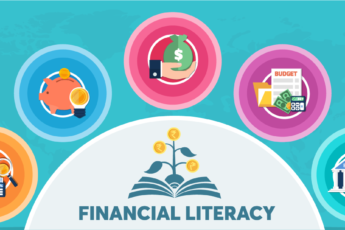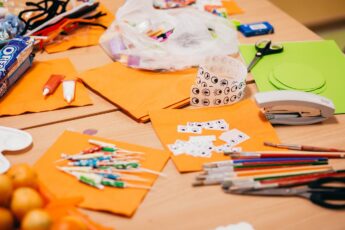Incorporating Color Psychology into Teaching Strategies
Color is an essential element that can significantly influence human emotions and moods. The study of color psychology examines the impact of color on behavior and mood, and educators are increasingly recognizing its potential to improve learning outcomes and create a positive classroom atmosphere. This blog delves into the power of the psychology of colors in teaching strategies, and how it can enhance student engagement, motivation, and retention of information.
🎨 Color Psychology
Different colors have different psychological effects on our mood and behavior. For example, warm colors like red, orange, and yellow can increase energy, creativity, and motivation. These colors are ideal for encouraging students to participate in group activities, discussions, and presentations. On the other hand, cool colors like blue, green, and purple can promote a sense of calmness, concentration, and focus. These colors are ideal for quiet activities like reading, studying, or taking tests.
In addition to warm and cool colors, neutral colors like white, gray, and black can also play a significant role in learning. White is often used to create a sense of spaciousness and cleanliness, while black can add a sense of sophistication and elegance. Gray is often used as a background color for text or images, making them stand out more.
By incorporating color psychology into teaching strategies educators can create a conducive learning environment that improves students’ academic performance and overall well-being. Here are some of the advantages:
- Increased Engagement: Educators can create a more visually appealing and interesting learning environment – this can help increase student engagement and motivation, as students are more likely to pay attention and participate in visually appealing and stimulating activities.
- Improved Memory Retention: Colors can help to improve memory retention, as using color-coded information can make it easier for students to remember and recall important details. This is particularly useful for students who struggle to retain information presented in a more traditional, text-heavy format.
- Enhanced Comprehension: Using colors can also improve comprehension as they can be used to organize information and highlight key concepts and ideas visually. This can help students better understand and retain information, particularly when dealing with complex or abstract concepts.
- Encourages Creativity: Educators can foster a more innovative and creative learning environment by allowing students to use colors to express their ideas and create visually appealing projects.
- Supports Different Learning Styles: Using colors in teaching can support different learning styles and preferences, such as visual, kinesthetic, and auditory learners. By incorporating visual elements, educators can help reach students who may not respond well to traditional lecture-based teaching methods, which can improve learning outcomes for all students.
🎨 Here’s how educators can teach about colors in a class:
- Color-coded notes: Encouraging students to take notes in different colors can help them organize and retain information better. Research suggests that warm colors like red, orange and yellow can help with memory retention, while cool colors like blue and green can promote concentration and focus, making it easier for students to retain important details.
- Color-coding activities: Using color-coding to help students identify different parts of an activity can make learning more organized and engaging. For example, educators can use different colors to highlight key concepts, questions, and instructions in worksheets, textbooks, or other learning materials, helping students focus on critical information.
- Classroom decor: The colors used in classroom decor can significantly impact the learning environment. Using bright, bold colors can create a more lively and energetic atmosphere that fosters creativity and productivity, while pastel colors can promote calmness and relaxation, creating a peaceful and focused learning environment.
- Colorful materials: Incorporating colorful materials like markers, highlighters, and colored pencils into lessons can help students engage with and retain information. Teachers can use different colors to highlight key concepts or create study aids like flashcards, making it easier for students to remember important details.
- Visual aids: Using colors to enhance visual aids like diagrams, charts, and infographics can make learning more engaging and effective. By using different colors to represent different parts of a diagram, educators can help students better understand and remember complex information.
- Color psychology activities: Engaging students in activities exploring the psychological effects of color can be fun and educational. For example, teachers can have students create a color wheel and explain the emotions and associations each color represents, helping them understand the power of color in different contexts.
🎨 The Bottom Line
In our modern world, colors are a powerful tool for conveying meaning, from brands and logos to merchandise and posters. It makes sense that the power of color is making its way into the classroom as a way to enhance learning, prepare students for college, and even test their reactions to certain materials. This Holi, make it more special by celebrating the the psychology of colors and using it as a chance to create a fun and exciting learning experience for your students.




Leave a Comment